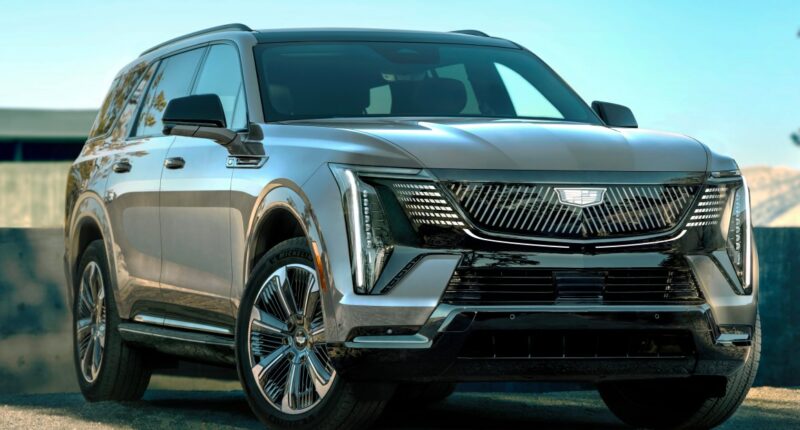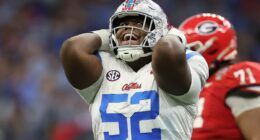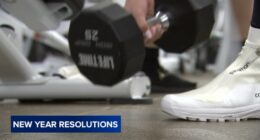Share this @internewscast.com
Growing up in the Midwest, everyone I knew owned compact cars. My dad drove a pink Volvo 240, my mom was behind the wheel of a Dodge Dart, and my grandmother had a 1988 Honda Accord, which later became my first vehicle. Living in the suburbs, trucks were a rare sight, and those who did own them opted for smaller models like the Ford Ranger or Toyota Hilux.
Over the years, these smaller vehicles gradually gave way to increasingly larger SUVs. These days, finding a new car smaller than a compact SUV is challenging. Ford ceased the production of sedans in North America several years ago, and while GM held out a bit longer, the Chevrolet Malibu’s exit in 2024 marks the end of their sedan offerings as well.
The auto companies claim these changes reflect evolving consumer preferences. Last year, SUVs and pickup trucks accounted for four out of every five vehicles sold in the U.S., a stark contrast to the ’90s when that figure was only around 25 percent. Americans have turned away from sedans, gravitating towards higher riding vehicles that offer a greater sense of safety and road dominance. Smaller cars have become obsolete, with larger — and often excessively large — models taking over.
However, these oversized trucks and SUVs pose significant dangers. According to the Insurance Institute for Highway Safety, vehicles with high hoods and blunt fronts are more likely to result in fatalities. Various studies highlight how these tall, flat-faced vehicles tend to cause more severe injuries compared to smaller counterparts. The large fronts increase the likelihood of causing deadly head and torso injuries to pedestrians. Additionally, higher clearance means victims might be pulled under a fast-moving SUV instead of being thrown onto the hood or aside. Front blind spots in big trucks and SUVs have led to numerous child injuries and deaths nationwide, according to research.
As American consumers gravitated towards these large, heavy vehicles, the rate of pedestrian fatalities skyrocketed: from 2013 to 2022, there was a 57 percent increase in pedestrian deaths, according to the National Highway Traffic Safety Administration. In 2022, single-vehicle crashes were responsible for 88 percent of pedestrian fatalities.
When facing these alarming figures, automakers often highlight the role of technology — cameras, sensors, blind-spot monitors, and automatic braking systems — in reducing pedestrian casualties. However, they seldom acknowledge the impact of vehicle design on accident fatalities. The reason is that large trucks and SUVs are both popular and highly profitable, offering a 10–20 percent higher profit margin than smaller cars due to their higher selling prices against slightly increased manufacturing costs.
“We’re providing the vehicles that consumers want, and playing to the strength of the company,” Kumar Galhotra, Ford’s then president for North America, told The New York Times in 2019.
Many people have been sounding the alarm on this trend, notably David Zipper, senior fellow at the MIT Mobility Initiative and Verge contributor. In 2023, he wrote in Slate that the story of “car bloat” can be explained by “carmaker profit, shifting consumer preferences, and loophole-riddled auto regulations.”
Those regulations, in particular, came into focus late last year, a few weeks before the November election, when NHTSA, perhaps a bit too optimistically, released a proposal that would strike at the heart of car bloat. Never in its 50-plus years in existence has the regulator issued new rules for automakers requiring them to change their vehicle designs to better prevent pedestrian fatalities — until now.
The rules would update the Federal Motor Vehicle Safety Standards (FMVSS), the government’s bible for everything that’s required in a new vehicle before it’s sold — from steering wheels to rearview mirrors — to set testing procedures to simulate head-to-hood impact, with the aim of reducing head injuries. If enacted, automakers will have to test their vehicles using crash test dummies representing adult and child pedestrians for the first time. NHTSA says the changes could save up to 67 lives every year.
The proposal drew over 5,700 comments, the vast majority of them enthusiastic. But safety groups argue that the rule could have a limited impact, given the focus on the hoods of vehicles and not the front-end design or height. Still, expectations are low that anything will move forward. NHTSA lost about 4 percent of its staff as part of DOGE’s efforts to slash the federal workforce. And advocates I spoke to don’t expect any meaningful safety rulemaking to advance under the Trump administration. Rebecca Neal, a spokesperson for NHTSA, would only say that “the rulemaking is still active.”
Most Americans aren’t aware of the danger posed by these big, hulking vehicles. They think that by ascending into the driver’s seat of a three-row, 4,000-pound SUV, they are not only better protecting themselves, but also their family. Because after all, isn’t it other drivers that are the real problem?
- Few trends have been more damaging to the environment and public safety than the dramatic growth in the SUV and truck market in recent decades. Between 2010 and 2020, 65 million new SUVs hit the roads in America. Collectively those vehicles will pump about 4.4 billion tons of carbon dioxide into the atmosphere over the next few decades — more planet-warming pollution than most nations have emitted throughout their entire history.
- Many experts point to the “SUV loophole” in tailpipe emission regulation as one source of this problem with car bloat. Passenger cars are subject to one set of emissions and mileage rules, and a broad class of vehicles called light trucks are subject to a different set. At the time these rules were written, SUVs barely existed and trucks were normally used by tradespeople. But over time, this loophole became more significant. Due to their more stringent regulations, small cars became more expensive to manufacture, while trucks and SUVs became cash cows.
- Vehicle design is only one piece in a large, complex puzzle to make roads safer. That includes lower speed limits, infrastructure improvements, and increased enforcement of traffic laws.
- Europe has already gone much further to protect pedestrians, enacting rules that would prevent many of the largest vehicles produced by US manufacturers from being sold on the continent.
- Some countries, like France, Norway, and the Netherlands, apply an added tax on heavier vehicles. Paris, in particular, uses weight taxes and higher parking fees to discourage drivers of big cars from entering the city.
This is The Stepback, a weekly newsletter breaking down one essential story from the tech world. For more on cars and consumer safety, follow Andrew J. Hawkins. The Stepback arrives in our subscribers’ inboxes at 8AM ET. Opt in for The Stepback here.







